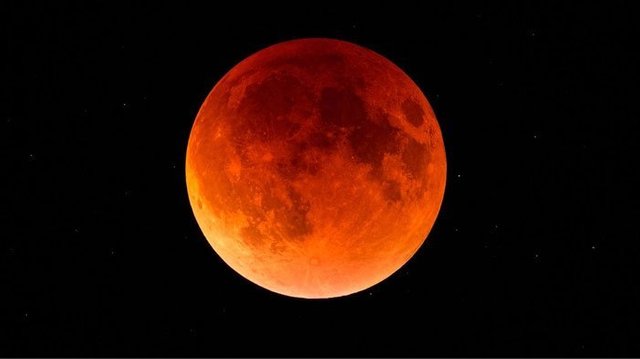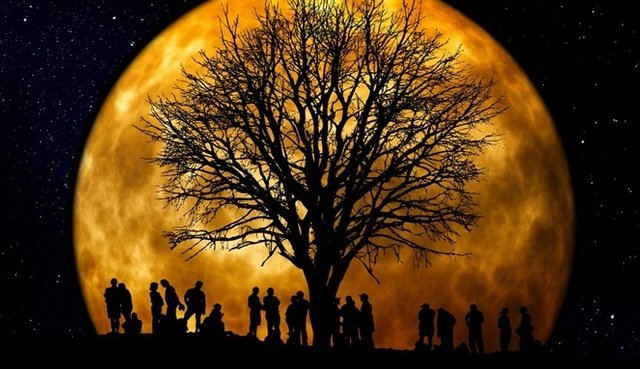Myth of the lunar eclipse

On July 28, 2018, predicted total lunar eclipse or called super blood moon.
This is the longest total lunar eclipse that will occur in our country, namely Indonesia.
Which means, a lunar eclipse occurs if some or all of the moon sightings are covered by the shadow of the earth.
The occurrence of many lunar eclipses that connect with distress.
Some regions in Indonesia believe in a lunar eclipse,
because of the marriage between the moon and the sun.
When the eclipse occurs, the population will hit whatever objects are encountered.
This is so that the moon and sun that will marry will soon discourage its intention.
Another myth in pregnant women is forbidden to leave the house and have to hide under the bed.
If not done, then the child in the womb will have striped skin.
really very funny, that myth ..

The myth associated with the eclipse also occurred in the time of the Prophet SAW.
When the son of Prophet Muhammad SAW named Ibrahim died, there was a solar eclipse.
The people of Mecca believe in the emergence of a solar eclipse, because of the death of Ibrahim, the son of Prophet Muhammad SAW.
Then Rasulullah SAW said that the occurrence of eclipses due to the power of Allah SWT, has nothing to do with the birth or death of someone.
"Surely the solar and lunar eclipses do not happen because of the death or the birth of a person.
If you see the eclipse, then pray and pray "(Bukhari).
The procedure of Sholat Eclipse is as follows:
a. Intend in the heart;
b. Takbiratul ihram, which is the same as ordinary prayer;
c. Reading the iftitah prayer and ta'awudz, then reading the letter Al Fatihah followed by reading a long letter (such as Surat Al Baqarah) while gazing (his voice hardened, not softly)
d. Then bow 'while extending it;
e. Then rise from ruku '(i'tidal) while saying "Sami'allahu Liman Hamidah, Rabbana Wa Lakal Hamd";
f. After i'tidal this did not immediately prostrate, but continued with reading the letter Al Fatihah and a long letter. This second stand is shorter than the first;
g. Then 'ruku' (second 'ruku') which is shorter than the previous 'ruku';
h. Then rise from ruku '(i'tidal);
i. Then prostrate as long as the bow ', then sit between two prostrations then prostrate again;
j. Then he rose from prostration and then worked on the second rak'ah as the first rak'ah was just a shorter reading and movements than before;
k. Salam!